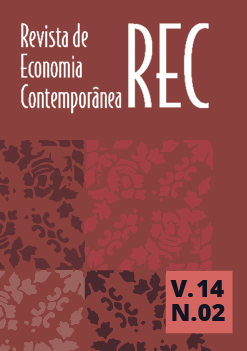CRESCIMENTO PRÓ-POBRE: ANÁLISE DOS ESTADOS BRASILEIROS ENTRE 1995 E 2007 // PRO-POOR GROWTH: AN ANALYSIS OF THE BRAZILIAN STATES BETWEEN 1995 AND 2007
Palavras-chave:
crescimento pró-pobre, mensuração da pobreza, dados de painel, análise subnacional, Brasil // pro-poor growth, poverty measurement, panel data, sub-national analysis, BrazilResumo
RESUMO: Este artigo analisa o crescimento pró-pobre nas 27 unidades federativas do Brasil entre 1995 e 2007. Inicialmente, examina-se a literatura recente sobre o tema e apresentam-se três indicadores para mensurar a relação entre crescimento, desigualdade e pobreza. Em seguida, calcula-se, através de dados de painel, a elasticidade renda-pobreza para o Brasil e suas 27 UFs. Finalmente, estimam-se curvas de incidência do crescimento (GIC) e taxas de crescimento pró-pobre (RPPG) para cada estado nos períodos 1995-2007, 1995-2001 e 2001-2007. Os resultados demonstram que a pobreza caiu rapidamente no Brasil desde 2001, mas ainda existe grande discrepância entre estados e regiões. Ademais, demonstra-se a diferença entre extensão e profundidade da pobreza.
ABSTRACT: This article analyzes the pro-poor growth in the 27 Brazilian states between 1995 and 2007. Initially, it examines the recent literature about the subject and presents three indicators to quantify the relationship among growth, inequality, and poverty. Following, it calculates, through panel data analysis, the growth elasticity of poverty in Brazil and across its states. Finally, it estimates growth incidence curves (GIC) and rates of pro-poor growth (RPPG) for three periods: 1995-2007, 1995-2001 and 2001-2007. The results show that poverty has been rapidly diminishing in Brazil since 2001, but there is still a huge discrepancy among some states and regions. Moreover, there comes up with a clear difference between the headcount index and the “deepness” of poverty.
Downloads
Downloads
Publicado
Edição
Seção
Licença
Todo el contenido se publica bajo una licencia Creative Commons CC-BY, salvo que se indique lo contrario.


